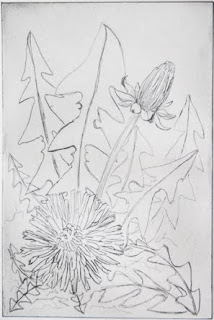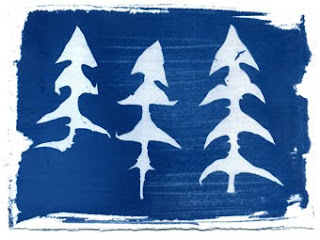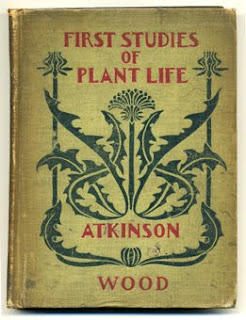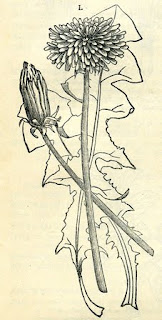skip to main |
skip to sidebar
 I found this info on the Leicester Pagan Alliance website: 'Herbal knowledge is a powerful tool. It was necessary for witches centuries ago who possessed such knowing, to disguise the names of their ingredients so, should their sacred journal fall into the wrong hands, without the corresponding Herbal Code to decipher the true meaning of the herbal ingredients, spells, potions and medicines would be useless'
I found this info on the Leicester Pagan Alliance website: 'Herbal knowledge is a powerful tool. It was necessary for witches centuries ago who possessed such knowing, to disguise the names of their ingredients so, should their sacred journal fall into the wrong hands, without the corresponding Herbal Code to decipher the true meaning of the herbal ingredients, spells, potions and medicines would be useless'
So, with this in mind, witches used 'Lions Tooth' instead of Dandelion.... how cunning. Please see Name Calling in the post below.
 It's not clear which part of the Dandelion was the source of its name - it could be the jagged leaves resembling the teeth of a lion, or the whole jaw of a lion; the yellow flower resembling the mane of a lion or the golden teeth of the heraldic lion.
It's not clear which part of the Dandelion was the source of its name - it could be the jagged leaves resembling the teeth of a lion, or the whole jaw of a lion; the yellow flower resembling the mane of a lion or the golden teeth of the heraldic lion.
Dandelion is a corruption of the French Dent de Lion. It's former scientific Latin name was Dens leonis and Linnaeus assigned it the name Leontodon taraxacum. Taraxacum is derived from the Greek taraxos (disorder) and akos (remedy). It's scientitic name is now Taraxacum officinale assigned by Weber. Officinale is from the Latin officina meaning pharmacy.
Different European countries use the Lion's tooth name too:
Diente de león - Spanish
Dente-de-leão - Portugese
Dente di leone - Italian
Löwenzahn - German
Løvetann - Norwegian
Løvetand - Danish
Dant y Llew - Welsh
There's also masses of local names: Swine's Snout, Blowball, Irish Daisy, Lion's Tooth, Priest's Crown, Canker Wort, Clocks and Watches, Devil's milk plant, Fairy Clock, Fortune Teller, Pee in the bed, Piss-a-bed, Puffball, Wet-a-bed, Wild Endive.
 I finally finished the book of seeds i've been working on.It's 32 pages of little dandelion seeds in fine black pen.In total there are 2560 seeds in the book.
I finally finished the book of seeds i've been working on.It's 32 pages of little dandelion seeds in fine black pen.In total there are 2560 seeds in the book.
 It was the opening of Conversations with the Collection exhibition on Tuesday night. I was asked to look through the collection at the Peter Scott Gallery at Lancaster University and choose a piece of work that I could then partner with a piece of my own work.We (I went with fellow artists Elaine Speight and Robina Llewellyn) weren't actually allowed to rummage through the real collection, but could look through massive catalogues listing each item. I picked a Chinese fan that showed a couple of butterflies with spooky eyes and there's a wonderful dandelion on it too. The flowers are faint but the leaves are really clear. I was chuffed to find a dandelion in the collection.So I partnered it with a piece that I was still working on and finished for the exhibition. It's a piece of black bed sheet embroidered with synthetic gold thread. I've stitched a row of 16 dandelion leaves on it - all different. The finished piece is 129 x 37 cm.The image here is a detail.
It was the opening of Conversations with the Collection exhibition on Tuesday night. I was asked to look through the collection at the Peter Scott Gallery at Lancaster University and choose a piece of work that I could then partner with a piece of my own work.We (I went with fellow artists Elaine Speight and Robina Llewellyn) weren't actually allowed to rummage through the real collection, but could look through massive catalogues listing each item. I picked a Chinese fan that showed a couple of butterflies with spooky eyes and there's a wonderful dandelion on it too. The flowers are faint but the leaves are really clear. I was chuffed to find a dandelion in the collection.So I partnered it with a piece that I was still working on and finished for the exhibition. It's a piece of black bed sheet embroidered with synthetic gold thread. I've stitched a row of 16 dandelion leaves on it - all different. The finished piece is 129 x 37 cm.The image here is a detail.
The exhibition runs until 20 May
Admission free
Mon - Fri 11am - 5pm
& Sat 11am - 4pm
 Culpeper's Complete Herbal - And English Physician EnlargedNicholas Culpeper was an apothecary, physician and astrologer. He wrote several works, but it's his Herbal that is the most famous and was first published in 1653.
Culpeper's Complete Herbal - And English Physician EnlargedNicholas Culpeper was an apothecary, physician and astrologer. He wrote several works, but it's his Herbal that is the most famous and was first published in 1653.
The entry for dandelion is quite long which includes description; place; time and government and virtues sections."DANDELION, VULGARLY CALLED PISS-A-BEDS
Descript.] It is well known to have many long and deep gashed leaves, lying on the ground round about the head of the roots; the ends of each gash or jag, on both sides looking downwards towards the roots; the middle rib being white, which being broken, yields abundance of bitter milk, but the root much more...Place.] It grows frequently in all meadows and pasture-grounds.
Time.] It flowers in one place or other almost all the year long.
Government and virtues.] It is under the domination of Jupiter. It is of an opening and cleansing quality, and therefore very effectual for the obstruction of the liver, gall and spleen, and the diseases that arise from them, as jaundice the hypocondriac; it opens the passages of the urine both in young and old; powerfully cleanses imposthumes and inward ulcers in the urinary passage; and by its drying and temperate quality doth afterwards heal them; for which purpose the decoction of the roots or leaves in white wine, or the leaves chopped as pot-herbs, with a few Alisanders, and bolied in their broth, are very effectual. And whoever is drawing towards a consumption or evil disposition of the whole body, called Cachexia , by the use hereof for some time together, shall find a wonderful help. It helps also to produce rest and sleep to bodies distempered by the heat of ague fits, or other wise. The distilled water is effectual to drink in pestilential fevers, and to wash the sores. You see here what virtues this common herb hath, and that is the reason the French and Dutch so often eat them in Spring; and now if you look a little farther, you may see plainly without a pair of spectacles, that foreign physicians are not so selfish as ours are, but more communicative of the virtues of plants to people."
I felt like I was coming down with a mild case of evil disposition the other day - if i'd known white wine and a few dandelions could have saved me - i would have given it a go.
 Gerard's Herbal - Of the Historie of Plants
Gerard's Herbal - Of the Historie of Plants
In 1597 John Gerard, the Elizabethan physician who superintended the gardens of Lord Burleigh in the Strand, first published Of the Historie of Plants. The first edition is seldom quoted, for the enlarged second edition, by Thomas Johnson, of 1633 was far better (there was over 1000 corrections made to the first edition). It was due to Johnson that the Herbal continued for a long time to be the standard work for English students.*
This is the entry for dandelion:
"The hearbe which is commonly called Dandelion doth send forth from the root long leaves deeply cut and gashed in the edges like those of wild Succorie, but smoother: upon every stalke standeth a floure greater than that of Succorie, but double & thicke set together, of colour yellow, and sweet in smell, which is turned into a round downy blowbal that is carried away with the wind. The root is long, slender, and full of milky juice, when any part is broken, as is the Endive or Succorie, but bitterer in tast than Succorie.
They are found often in meadowes, neere unto water ditches, as also in gardens and high wayes much troden.
They floure most times in the yeare, especially if the winter not be extreme cold."
*I've used information written by Marcus Woodward in 1927 from the introduction to my copy of Gerard's Herbal.
I dissected the flower head of a dandelion and the drawing above is of the individual parts. The original drawing is A2 size.
 Yesterday I went to the Peter Scott Gallery in Lancaster (at the University) to install a piece of work for an exhibition that starts next week.It was a cold day with brief snow showers, but I still wanted to find a couple of dandelion leaves for the dandelion diary. Although surrounded by fields, the campus is a fairly brutal concrete mini city with hardly any planted areas. Right outside the Main Hall entrance is a raised bed imaginatively planted up with grass, so the dandelions pictured here are from there. The leaves are tiny.
Yesterday I went to the Peter Scott Gallery in Lancaster (at the University) to install a piece of work for an exhibition that starts next week.It was a cold day with brief snow showers, but I still wanted to find a couple of dandelion leaves for the dandelion diary. Although surrounded by fields, the campus is a fairly brutal concrete mini city with hardly any planted areas. Right outside the Main Hall entrance is a raised bed imaginatively planted up with grass, so the dandelions pictured here are from there. The leaves are tiny.
In winter I can still find dandelions, but they are little, hardy, low-lying things struggling to hold on over the cold months.
 I don't know whether you've noticed, but when there's a double episode of Coronation Street, when the first one has finished and it says 'Coronation Street continues in half an hour' they often have a screen shot with a fantastic close-up of a dandelion on a back street.(apart from last night acutally as it was an episode where Gail the chinless wonder and her husband, whatshisname - you know the one whose daughter used to go out with evil David (Gail's son) and I think she still works in The Cabin with Rita (where did Rita go?) go on a trip to the Lakes and he (Gail's husband) tries to fake his own death, quite successfully, I'd say. Oooh, poor Gail.)
I don't know whether you've noticed, but when there's a double episode of Coronation Street, when the first one has finished and it says 'Coronation Street continues in half an hour' they often have a screen shot with a fantastic close-up of a dandelion on a back street.(apart from last night acutally as it was an episode where Gail the chinless wonder and her husband, whatshisname - you know the one whose daughter used to go out with evil David (Gail's son) and I think she still works in The Cabin with Rita (where did Rita go?) go on a trip to the Lakes and he (Gail's husband) tries to fake his own death, quite successfully, I'd say. Oooh, poor Gail.)
The image here isn't from Coronation Street, if you're wondering, but another of my test cyanotypes with a dandelion form my backyard.
 In January I got this email from Dr Christine Guth:Dear RebeccaA very happy new year to you!I hope you are making good progress on your Japanese dandelion research. Perhaps you have already come across this information, but the January 2 issue of the Economist has an interesting article on a Russian variety of dandelion that may prove to be a new source of rubber! It's in the science and technology section, and naturally, when I read it, I thought of you!All bestChristineFunnily enough my subscription to Economist had just run out, so I hadn't read it. But Muffy's mum had told me the same thing earlier (see post USA Connection).Here is the opening paragraph from the article in Economist:Tremble, Michelin, Tremble.Other than being an ingredient of the more recherche sorts of salad, herbal tea or wine, dandelions are pretty useless plants. Or, at least, they were. But one species, a Russian variety called Taraxacum kok-saghyz (TKS), may yet make the big time. It produces molecules of rubber in its sap and if two research programmes, one going on in Germany and one in America, come to fruition, it could supplement - or even replace - the traditional rubber tree, Heevea brasiliensis.
In January I got this email from Dr Christine Guth:Dear RebeccaA very happy new year to you!I hope you are making good progress on your Japanese dandelion research. Perhaps you have already come across this information, but the January 2 issue of the Economist has an interesting article on a Russian variety of dandelion that may prove to be a new source of rubber! It's in the science and technology section, and naturally, when I read it, I thought of you!All bestChristineFunnily enough my subscription to Economist had just run out, so I hadn't read it. But Muffy's mum had told me the same thing earlier (see post USA Connection).Here is the opening paragraph from the article in Economist:Tremble, Michelin, Tremble.Other than being an ingredient of the more recherche sorts of salad, herbal tea or wine, dandelions are pretty useless plants. Or, at least, they were. But one species, a Russian variety called Taraxacum kok-saghyz (TKS), may yet make the big time. It produces molecules of rubber in its sap and if two research programmes, one going on in Germany and one in America, come to fruition, it could supplement - or even replace - the traditional rubber tree, Heevea brasiliensis.
 I went to London in December to look in the collections at the V&A and also the British Museum. I wanted to see if I could find the representation of dandelions in any of the objects on display.I spent a whole day looking through the V&A collections: what a treat! I think I must have walked about 27 miles (and consequently came down with a severe case of 'gallery foot ').I felt like I was on an expedition looking for specimens in an unlikely landscape.
I went to London in December to look in the collections at the V&A and also the British Museum. I wanted to see if I could find the representation of dandelions in any of the objects on display.I spent a whole day looking through the V&A collections: what a treat! I think I must have walked about 27 miles (and consequently came down with a severe case of 'gallery foot ').I felt like I was on an expedition looking for specimens in an unlikely landscape.
I found a few dandelions in the collection - a tiny one on a medieval painting (no flower, just the leaves); one in bloom in the background of a huge tapestry; and the best was on a Japanese lacquered box.
The Japanese box was the jewel of my finds: it was getting towards the end of the day and I had scrutinised so many objects by then, and the two I'd already found were incidental background additions. The Japanese one was deliberate, beautiful and delicate. It was made by Ikeda Taishin and is a lacquered box for writing utensils dated 1870 - 1900. What a beautiful specimen and on a Japanese object too - it fits so well into my research so far.
I did take snapshots of the work, but I doubt I can post them on my blog - you'll just have to go on a trip and discover them for yourself.
While I was in London I was staying with my friend Neil. He studied at the V&A and he set up a meeting for me with Dr Christine Guth who works at the museum. Her particular field of study is Japanese design history so we had a lot to chat about and I had many questions for her. It was great to talk to her about the dandelion project and hear her thoughts and suggestions for reading material, people to contact and places to visit.
I was in London for a few days and on my return to Euston Station on the last day I decided to pop into the British Museum for a couple of hours. Obviously that's not even nearly enough time to explore the collection especially when its teaming with visitors (how inconvenient). So, I went straight to the Japanese collection. There on a vase, with two doves annoyingly blocking the view, was a pretty little dandelion! It is a vase by Namikawa Sosuke and made in around 1897. How exciting! No, really - I think that's exciting.
So my expedition to London went really well and I came away refreshed, inspired and with lots of stuff to think about.
 "Dandelions are not like most other plants. Within the British Isles, virtually all dandelions reproduce apomictically, that is they produce seed asexually, each seedling usually being an exact copy of its mother. Sexual reproduction in dandelions, if it occurs at all, is very rare in our islands"
"Dandelions are not like most other plants. Within the British Isles, virtually all dandelions reproduce apomictically, that is they produce seed asexually, each seedling usually being an exact copy of its mother. Sexual reproduction in dandelions, if it occurs at all, is very rare in our islands"
AA Dudman & AJ Richards Dandelions of Great Britain and Ireland
 I emailed Muffy's mum, Mary (who lives in USA). I told her about the dandelion project and this is her reply:
I emailed Muffy's mum, Mary (who lives in USA). I told her about the dandelion project and this is her reply:
Dear Rebecca
We have several kinds of dandelions here. The most prominent one is the common dandelion, taraxacum officinale, which was brought here by the early colonists from Europe. It was used for food, medicine and wine and was an important ingredient to their livelihood. Its popularity has waned through the centuries and is now an invasive plant, disliked by the majority.
I have always had an interest in dandelions and have studied every facet of their makeup and history. Healthwise, they contain vitamins and minerals galore! The leaves, blossoms, and roots are all edible, as well as medicinal. Each plant is a supermarket in itself. A few people still raise it for a vegetable and we have one town in Maine that has a canning factory that cans the leaves as greens, in the spring, when they are young and not bitter. A town in the state of New Jersey has a Dandelion Festival every spring. Farmers raise acres of dandelions and everyone gets into the spirit and helps with the preparations. Dandelions are prepared in every way you could imagine including deep fried blossoms, salads and lasagne!The Russian dandelion, kok-saghyz, came to the United States during World War II. It has a much larger root with more latex. When the Japanese cut off our rubber supply, Russia sent us seeds of their dandelion so we could make our own rubber supply as they were doing. After the war, the plants were destroyed because it was not feasible when we could get back to our own rubber supply. That is another whole story that I have recorded for history.Now I would like to hear about the printing side of the plant! I have rolled a brayer covered with paint over the underside of the leaves to get prints for teaching purposes, but that is my only experience in that direction!I wonder if the invasive dandelion in Japan is the same as our common dandelion which came from England with the early settlers?It was nice to hear from you.Mary












